The agreement ups the maximum days retirees can work in a school year without clawing back any of their pension
Author of the article:
Antonella Artuso
Publishing date:
Jan 10, 2022 • January 10, 2022 • 1 minute read
43 Comments Minister of Education Stephen Lecce at a press conference in Ottawa on October 13, 2021. Photo by Jean Levac /PostmediaRetired teachers will be allowed to teach up to 95 days a year to fill a projected shortfall of 7,000 occasional teachers, Ontario Education Minister Stephen Lecce announced Monday.
Story continues below
This advertisement has not loaded yet, but your article continues below.
The ministry says that almost 40% of school boards report they have no occasional teacher to fill in for up to 25% of their teacher absences.
We apologize, but this video has failed to load.
Try refreshing your browser, or
tap here to see other videos from our team.
The government has reached a temporary agreement with the Ontario Teachers’ Federation (OTF) to up the maximum days retirees can work in a school year to 95 from the current 50 without clawing back any of their pension.
As the Canadian national soccer teams head to their respective FIFA World Cups, Derek Van Diest is on the scene to cover all the action. Expect expert insights and analysis in your inbox daily throughout the tournaments, and weekly on Thursdays for the rest of the season.
Email Address
By clicking on the sign up button you consent to receive the above newsletter from Postmedia Network Inc. You may unsubscribe any time by clicking on the unsubscribe link at the bottom of our emails. Postmedia Network Inc. | 365 Bloor Street East, Toronto, Ontario, M4W 3L4 | 416-383-2300
Postmedia Network Inc. | 365 Bloor Street East, Toronto, Ontario, M4W 3L4 | 416-383-2300
“Well before Omicron came to Ontario, school boards were reporting high rates of absenteeism from education staff,” Lecce said in a statement. “We need staff in order to continue providing live teacher-led remote learning and safely operate our schools when students return to in-person learning.
“That is why we have now secured an agreement with the Ontario Teachers’ Federation that will deliver access to thousands of teacher-qualified educators that will help keep schools open and safe.”
Story continues below
This advertisement has not loaded yet, but your article continues below.
The government says funding for the additional retiree teaching time will come out of a $304-million fund to increase education staffing by 2,000 or more positions during the pandemic.
We apologize, but this video has failed to load.
Try refreshing your browser, or
tap here to see other videos from our team.
Ontario has penciled in Jan. 17 as the date that elementary and secondary students return to in-class learning but families have yet to have that date confirmed.
Dan Kelly, president and CEO of the Canadian Federation of Independent Business, tweeted Monday: “Note to the Ontario govt: parents/employees and employers need to know if our kids are back to in person school next week. This decision has a profound impact on the workforce and notice is critical.”
Story continues below
This advertisement has not loaded yet, but your article continues below.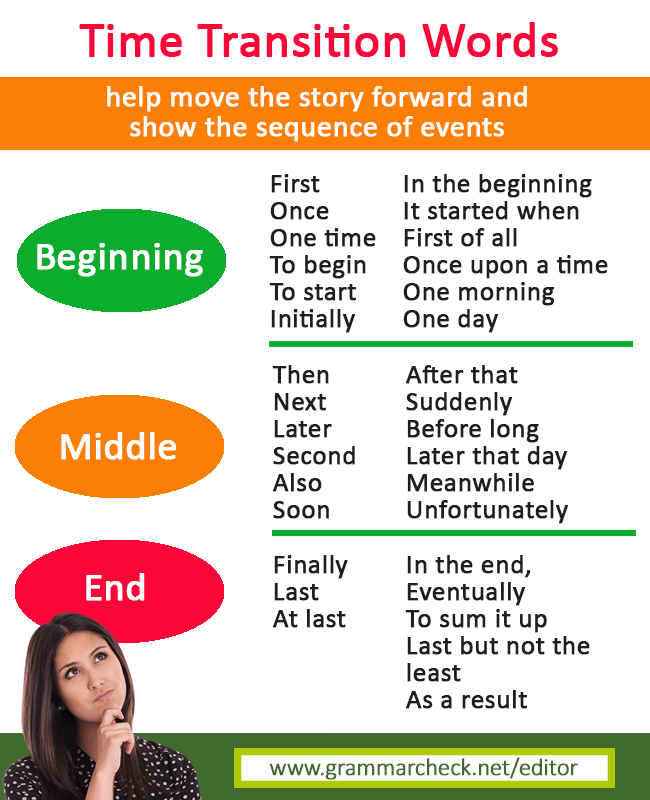
Education
By Ryan Rocca Global News
Posted January 10, 2022 1:04 pm
Updated January 10, 2022 6:25 pm
Questions mount over Ontario’s return to in-person learning
WATCH: Questions mount over Ontario’s return to in-person learning – Jan 10, 2022Ontario is nearly doubling the number of days retired teachers are allowed to work in the public school system in a bid to address staffing shortages.
In a news release issued Monday, the government said under an agreement with the Ontario Teachers’ Federation (OTF), retired teachers, principals and vice principals will be able to work 95 days in an instructional year, up from 50.
The measure will be in effect until June 30.
“We are seeing staff shortages impacting all sectors of the economy,” Education Minister Stephen Lecce said in the release.
Read more: Ontario to add more COVID vaccine clinics for school staff in Toronto and Hamilton regions
Read More
Ontario to add more COVID vaccine clinics for school staff in Toronto and Hamilton regions
“Well before Omicron came to Ontario, school boards were reporting high rates of absenteeism from education staff. We need staff in order to continue providing live teacher-led remote learning and safely operate our schools when students return to in-person learning.
“That is why we have now secured an agreement with the Ontario Teachers’ Federation that will deliver access to thousands of teacher-qualified educators that will help keep schools open and safe.”
Government figures show that almost 40 per cent of school boards are reporting that 25 per cent of their teacher absences were unfilled by a supply teacher.
NEW: Education Minister Stephen Lecce announces through a statement that staffing shortages will be addressed by letting retirees work longer.
Still no word yet on when parents will find out if Jan. 17 reopening will go ahead as planned. #onpoli #covid19 pic.twitter.com/nylBUw6LWn
— Matthew Bingley (@mattybing) January 10, 2022
Almost 20 per cent of school boards indicated that up to 50 per cent of absences were not filled.
Trending Now
New kids dental benefit now open to some Canadians. Here’s what to know
‘That ’90s Show’ trailer: Watch Red and Kitty Forman reopen their basement
Trending Now
Calgary man wanted on Canada-wide warrant for human-trafficking
Pluto TV: Corus, Paramount launch free streaming service in Canada
Lecce said that Ontario has also invested $304 million which is expected to support the hiring of over 2,000 staff members “while expanding access to second-year teacher candidates and nearly doubling the number of days retired teachers can work within our schools. ”
”
Lecce added that the government is continuing to make schools “as safe as possible” amid COVID-19, with N95 masks being provided to educators, accelerated booster shots for education and child-care staff, school-focused vaccination clinics, and improved ventilation.
The OTF addressed the agreement in a written statement on Dec. 31 — more than a week before the government announced the change — noting that it “does not expect that many retirees are interested in working in the current environment,” but the change will allow them to work more days if they choose to do so.
Paediatrician talks about the mental health effects of Ontario’s latest school closures
The group said in a subsequent statement that “more robust health and safety measures” including social distancing, regular virus testing, smaller class sizes and “appropriate masks” for both staff and students “would also encourage new graduates and existing occasional teachers to make themselves available.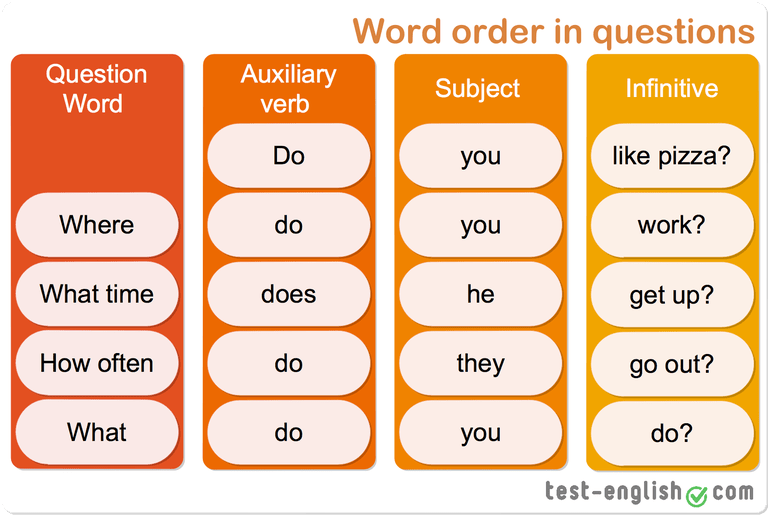 ”
”
“This would strongly mitigate the need for additional retirees (average age of which is 72) to somehow fill any void, given the current environment,” the statement said.
Chris Cowley, president of the OTF, said in an email on Monday that around 60 out of 142,000 retired members “have expressed interest in increasing the 50-Day re-employment rule” since September.
Ontario schools are currently engaging in remote learning amid the recent spike in COVID-19 cases.
Classes are expected to remain virtual until at least Jan. 17.
— With files from The Canadian Press
Journalistic standards Report an error
© 2022 Global News, a division of Corus Entertainment Inc.
THE CANADIAN PENSION INCOME SYSTEM HAS THREE LEVELS:
 If you meet certain requirements for permanent residence in Canada, then, upon reaching the age of 65, this entitles you to a small monthly pension.
If you meet certain requirements for permanent residence in Canada, then, upon reaching the age of 65, this entitles you to a small monthly pension. The first and second pillars of the Canadian pension income system make up the Canadian public pension system. Currently, these pension forms are a significant part of the income of pensioners, but still the state pension cannot fully meet the financial needs in old age.
Many financial advisers claim that you will need approximately 70 percent of your current income (before taxes) to maintain an adequate standard of living after you leave your job. For example, if you are earning $60,000 now, you should aim for $42,000 in retirement. However, this is just a general rule.
For example, if you are earning $60,000 now, you should aim for $42,000 in retirement. However, this is just a general rule.
OLD AGE SECURITY
The Old Age Security (OAS) - old age pension. This program, which is the cornerstone of the Canadian retirement income system, includes a basic pension that is given to almost all people aged 65 and over who have lived in Canada for a certain number of years.
Old Age Security is Canada's largest public pension plan.
Living in Canada already entitles you to this pension.
As a general rule, in order to get an OAS in Canada, you must be 65 years old and have lived here for at least 10 years after you turn 18.
A bit of history: OAS (Old Age Security program) was introduced in 1951 and was intended for 70-year-old pensioners. In 1960, the age criteria changed and reduced the age required to receive these benefits to 65. Since then, life expectancy has increased by 5 years for men and 7 years for women.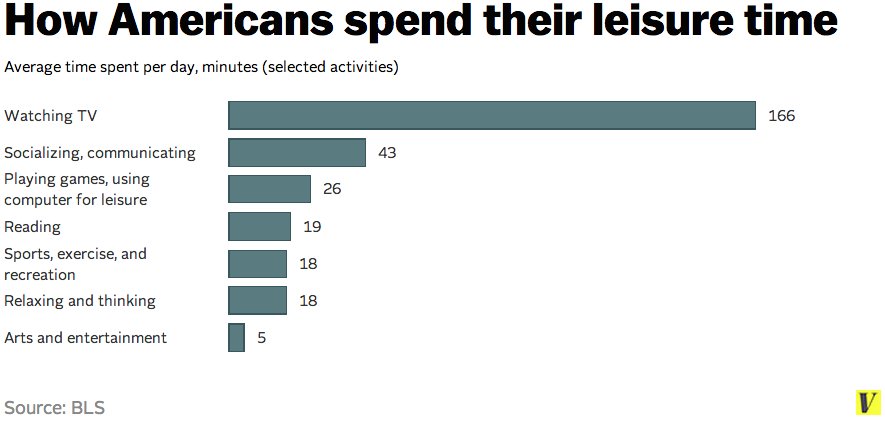 The ever-increasing life expectancy, taking into account the increase in the number of retirees (baby-boomers), becomes a financial burden for the state. At 19In the 70s, there was 1 pensioner for 7 workers, in the 90s there were 4 working people for 1 pensioner, in 20 years there will be only two working for 1 pensioner.
The ever-increasing life expectancy, taking into account the increase in the number of retirees (baby-boomers), becomes a financial burden for the state. At 19In the 70s, there was 1 pensioner for 7 workers, in the 90s there were 4 working people for 1 pensioner, in 20 years there will be only two working for 1 pensioner.
If the recipient has lived in Canada for at least 20 years after the age of 18, the old-age pension is paid even if the recipient leaves Canada. However, if a person has not resided in Canada for 20 years after their 18th birthday and subsequently leaves Canada for more than 6 consecutive months, excluding the month in which they left, an old-age pension payment for any periods of more than 6 months of absence may be suspended. Payments resume in the month the person returns to Canada. To resume payments, you must apply for an OAS.
How much income can be expected.
The amount of OAS you receive depends on the number of years you have lived in Canada since you turned 18. You generally receive a full pension if you have lived in Canada for at least 40 years after your 18th birthday. If you live here for less, you may be eligible for a partial pension. With a partial pension, you will receive 1/40th of your full pension for each full year you have lived in Canada after your 18th birthday.
You generally receive a full pension if you have lived in Canada for at least 40 years after your 18th birthday. If you live here for less, you may be eligible for a partial pension. With a partial pension, you will receive 1/40th of your full pension for each full year you have lived in Canada after your 18th birthday.
| Maximum OAS, GIS and SPA Benefit Rates for July to September 2021 | Maximum Monthly payment amount | Maximum annual income to receive the OAS pension and benefits | |
| Old Age Security (OAS) Maximum benefits | $626.49 | 129.581 Footnote 2 (individual income) | |
| Guaranteed Income Supplement (GIS) amounts for individuals receiving a full Old Age Security (OAS) pension | If you are a single, widowed or divorced pensioner | $935. 72 72 | $18,984 (individual income) |
| If your spouse/common-law partner receives the full OAS pension | $563.27 | $25,104 (combined income) | |
| If your spouse/common-law partner does not receive an OAS pension | $935.72 | $45,504 (combined income) | |
| If your spouse/common-law partner receives the Allowance | $563.27 | $$45,504 (combined income) | |
| Spouse’s Allowance (SPA) (for pensioners from age 60 to 64) | If your spouse/common-law partner receives the GIS and the full OAS pension | $1,189.76 | $35,136 (combined income) |
| If you are a surviving spouse or common-law partner | $1,418. 25 25 | $25,560 (individual income) | |
This table uses data from the government website
www.servicecanada.gc.ca/eng/services/pensions/oas/payments/index.shtml.
If you end up with little or no income other than your OAS, you may be eligible for a GIS ( Guaranteed income Supplement ) - Guaranteed Pension Supplement. Nearly one and a half million retirees whose basic income qualifies as low by a certain standard are eligible for Federal Guaranteed Allowance (GIS) . Its value depends on your income or on the joint income of the spouses. GIS is added to your monthly OAS pension. The maximum payout in GIS will be $935.72 in 2021 for one person and $563.27 for each spouse.
Depending on the pensioner's total income, an increase in his income may lead to a reduction in social benefits. This abbreviation is defined by the term claw back . Social assistance amounts and reductions are calculated based on the pensioner's basic income for the previous year, excluding Old Age Pension (OAS) received. Income includes both CPP and employer pensions, individual RRSPs, interest in your savings, and so on. GIS is reduced by $1 for every $2 of non-OAS income.
Income includes both CPP and employer pensions, individual RRSPs, interest in your savings, and so on. GIS is reduced by $1 for every $2 of non-OAS income.
The amount of total income, upon reaching which social benefits are fully deductible, is determined by the term income level cutoff .
Specific figures.
GIS payments per person.
The maximum GIS benefit for a single retiree or senior whose spouse or common-law partner does not receive an Old Age Pension (OAS) or Social Security was $9 in the third quarter of 202135.72. This allowance is reduced by 67 cents for every $1 of the retiree's basic income. A single person is ineligible for this allowance if their income, minus old age pension, is $18,984.
GIS payments for spouses or common-law partners.
A person whose spouse or common-law partner also has a pension or welfare received $563.27 per month as the maximum government allowance in the first quarter of 2021. This amount is also reduced by $1 for every $2 of the couple's base income. A couple is completely ineligible for this allowance if their income, minus old-age pension, is $25,104.
This amount is also reduced by $1 for every $2 of the couple's base income. A couple is completely ineligible for this allowance if their income, minus old-age pension, is $25,104.
All pensioners are equally entitled to the Guaranteed State Pension Supplement, including those who receive an incomplete old-age pension, but it is especially important for immigrants who have arrived in the country already in adulthood, and have lived in Canada for less than 40 years by the time they reach retirement age. This allowance is calculated on an annual basis, i.e. only income from the previous year really affects the state premium. The presence of paid or unpaid property has no effect on the allowance, but only permanent residents of Canada can receive it. If the beneficiary leaves the country for more than 6 months, the payment of the supplement stops. Upon return, the GIS social allowance must be applied for and payments will be resumed if the recipient is still eligible, missed payments will not be made up.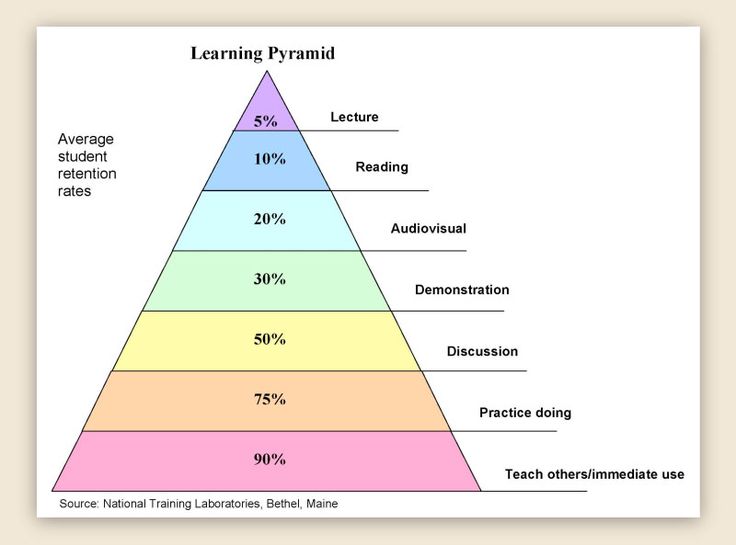
The Allowance is a government allowance for older Canadians designed to keep people out of poverty in their later years. By law, spouses and common-law spouses of pensioners, as well as widows and widowers aged 60 to 64, are eligible for this monthly supplement, provided that they have lived in Canada for at least 10 years after reaching the age of 18 (taking into account mutual agreement with other countries) and if, according to established standards, their income qualifies as low. In 2010, almost 90,000 people.
The Allowance is designed to help people get past the age of 65 when they become eligible for OAS.
The Government of Canada pays listed benefits in addition to the OAS pension from general tax revenue. The amount of payments is calculated depending on the total income of the recipient.
Specific figures.
Allowance benefits for spouses or common-law partners.
The maximum amount that spouses or common-law spouses of pensioners over 60 but under 65 can receive in the form of Allowance in the third quarter of 2021 was $1,189. 76 per month. This is equal to the combined sum of the Maximum Guaranteed Pension Supplement (GIS) and Old Age Pension (OAS).
76 per month. This is equal to the combined sum of the Maximum Guaranteed Pension Supplement (GIS) and Old Age Pension (OAS).
The deductions from this benefit (claw back) are $3 per month for every $4 of the couple's base income, up to (4/3) of the State Old Age Basic Pension. Above this amount, the deductions are $1 for every $4 of a couple's base income.
The maximum retirement pension is $7,517.88 per year, calculated as ($626.49 x 12). The annual income limit beyond which Allowance is not awarded is $35,136.
Allowance benefits for widows, widowers, or unmarried partners.
Provided that they have lived in the country for a specified period of time and have a low income in accordance with established standards, widows and widowers of state pension recipients are entitled to widowhood allowance. The Widow's Benefit is paid only until the recipient reaches the age of 65, after which it is replaced by the Standard State Pension (OAS) with a Guaranteed Supplement (GIS). The widow's allowance may also end before the recipient reaches 65 years of age if he (she) remarries or dies.
The widow's allowance may also end before the recipient reaches 65 years of age if he (she) remarries or dies.
There was a mention of a reduction in the amount of social assistance, calculated on the basis of the net income of the recipient (Claw back - Social Security Deductions) .
OAS claw back if the recipient has a high income was introduced in 1989. OAS clawback threshold is the threshold, the maximum amount of income, up to which the age pension is paid in full. In the third quarter of 2021, it was $79.054. Once a year, this amount is indexed for inflation. For a person whose total income, including OAS, exceeds the $79,054 (OAS claw back threshold) set in that year, the state begins to reduce the age pension. If a retiree's income exceeds $129,581 per year, then the OAS pension is no longer paid at all.
About 5% of pensioners receive an incomplete OAS pension, and only 2% lose their pension completely. Thus, there is no need to talk about reducing the old-age pension, we can only talk about reducing pension supplements. In order to decide whether these allowances will be reduced or not, you need to meet with a specialist.
In order to decide whether these allowances will be reduced or not, you need to meet with a specialist.
OAS pension is taxable, GIS and the Allowance are not.
Your OAS pension is taxable and must be declared in Income Tax Return annually. The Guaranteed Income Supplement (GIS) and Allowance are tax deductible, but you must still report them on your tax return.
If you receive a basic OAS pension from outside of Canada, it is paid to you in Canadian dollars and you receive a tax notice to report in your country of residence. Your pension may be taxed in Canada.
OAS inflation protected pension.
OAS pensions, the GIS and the Allowance are reviewed for inflation every January, April, July and October to help balance the rising cost of living. You can find out what their current value is by calling or visiting the website (see the Reference section).
Keep your proof of residence in Canada.
If you live outside the country for an extended period of time, keep supporting documents (such as passports and airline tickets) to show when you left Canada and when you returned. This will help prove your eligibility for OAS.
OAS pension is not calculated automatically - you must apply for old-age pension and OAS benefits.
To start receiving a retirement pension, a person must complete an application at Human Resource Development Canada's Department of Social Programs. If the application is submitted after the applicant reaches the age of 65, it may be approved retroactively, but not more than one year ago. You must also apply for GIS and Allowance - Allowance and then update them every year. This is usually done at the time of filing the tax return (income tax) until April 30th.
Beginning in July 2013, you can delay the start of your Old Age Security (OAS) pension up to 60 months (5 years) after you become eligible to start receiving the pension. The amount of the pension increases with each month of delay by 0.6% and can reach a maximum increase of 36% by the age of 70.
The amount of the pension increases with each month of delay by 0.6% and can reach a maximum increase of 36% by the age of 70.
If you choose to delay the start of your OAS, you will not be able to receive your Guaranteed Income Supplement , your spouse/partner will also not receive Allowance until you start receiving an OAS pension.
You can get an application form by copying it from the website (apply now) or by ordering it by phone (see the Help section).
CANADA PENSION PLAN
The Canada Pension Plan (CPP) - The Canada Pension Plan can provide you with a monthly pension and other benefits.
Canada Pension Plan pays monthly pensions to people who have worked and paid in CPP. The CPP program began to work from 1966 years old and was originally conceived to reimburse 25% of a person's income in pre-retirement years.
This plan works at the same time as an insurance plan, providing disability and survivor benefits. This will provide a small monthly income for you and your dependent children if you are seriously injured at work. This plan will also provide monthly payments to your spouse or children in the event of your death.
This will provide a small monthly income for you and your dependent children if you are seriously injured at work. This plan will also provide monthly payments to your spouse or children in the event of your death.
Your contribution to CPP is calculated as a percentage of income (this takes into account minimum and maximum income rates established by the state for these purposes). In 2021, these values are $3.500 and $61.500 respectively.
The minimum amount of $3,500 has not changed for many years, while the maximum amount of income from which contributions are made to the Canadian pension system increases annually to adjust for inflation.
Changes in the minimum and maximum income rates in recent years:
| Year | Minimum income rate | Maximum income rate | |
| 2021 | $3,500 | $61,500 | |
| 2020 | $3,500 | $58,700 | |
| 2019 | $3,500 | $57,400 | |
| 2018 | $3,500 | $55,900 | |
| 2017 | $3,500 | $55,300 | |
| 2016 | $3,500 | $54,900 | |
| 2015 | $3,500 | $53,600 | |
Starting in 2019, the Canadian pension program has undergone significant changes and, first of all, now the focus will be on reimbursement of one third of a person's income in pre-retirement years, and not 25%, as it was before.
An increase in the size of the pension requires large contributions to this program and within 5 years, from 2019 to 2023, contributions to the CPP will increase significantly.
This can be seen in the table below:
| Employee Contribution Rate | Employer Contribution Rate | Combined Rate | |||||
| Current | Phase-in | Total | Current | Phase-in | Total | ||
| 2019 | 4.95% | 0.15% | 5.10% | 4.95% | 0.15% | 5.10% | 10.20% |
| 2020 | 4.95% | 0.30% | 5.25% | 4.95% | 0.30% | 5.25% | 10.50% |
| 2021 | 4.95% | 0.50% | 5.45% | 4.95% | 0.50% | 5. 45% 45% | 10.90% |
| 2022 | 4.95% | 0.75% | 5.70% | 4.95% | 0.75% | 5.70% | 11.40% |
| 2023 and future years | 4.95% | 1.00% | 5.95% | 4.95% | 1.00% | 5.95% | 11.90% |
During 2024 and 2025, the state increases by 14% the maximum amount of income from which deductions are made to the SRR.
There will be a separate contribution of 8% for this increased amount (4% employer and 4% employee). In 2024, you will need to make deductions from only half of the increased amount, and from 2025 you will have to pay from the entire increase.
| Year | Increase in Maximum Pensionable Earnings | |
| 2024 | 8.0% | There will be a 14% increase in maximum pensionable earnings. In 2024, only 50% of this increase will be subject to premiums.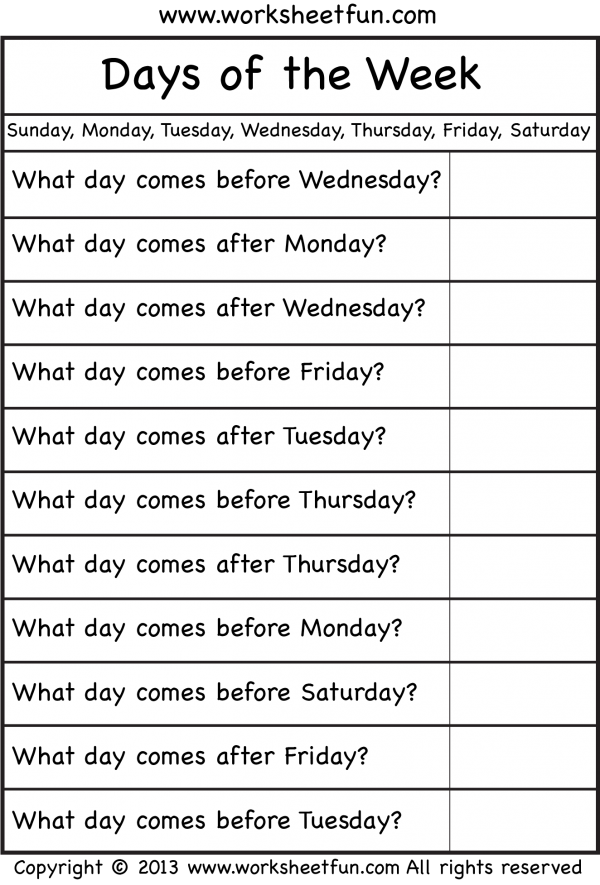 For earnings between the YMPE and YAMPE, the employee and employer will each pay premiums of 4%. For earnings between the YMPE and YAMPE, the employee and employer will each pay premiums of 4%. |
| 2025 | 8.0% | In 2025, the remainder of the increase in maximum pensionable earnings will be subject to premiums. |
Let's see how deductions are made today.
For example, Mr. Ivanov will earn $27,000 in 2021. His income for CPP deductions will be $23,500 ($27,000 - $3,500). The employer deducts a contribution equal to 5.45% (($27,000 - $3,500) x 5.45% = $1,280.75) from his salary and makes an equivalent contribution of CPP equal to 5.45% of the income used to calculate the pension.
Dr. example: Mr. Petrov's income in 2021 will be $82,000. Retirement income from which he will contribute to the CPR will be $58,000 ($61,500 - $3,500). 5.45% of this amount will equal $3,161.
If Mr. Sidorov is a private entrepreneur, he acts both as an employer and as an employee and pays both parts, i.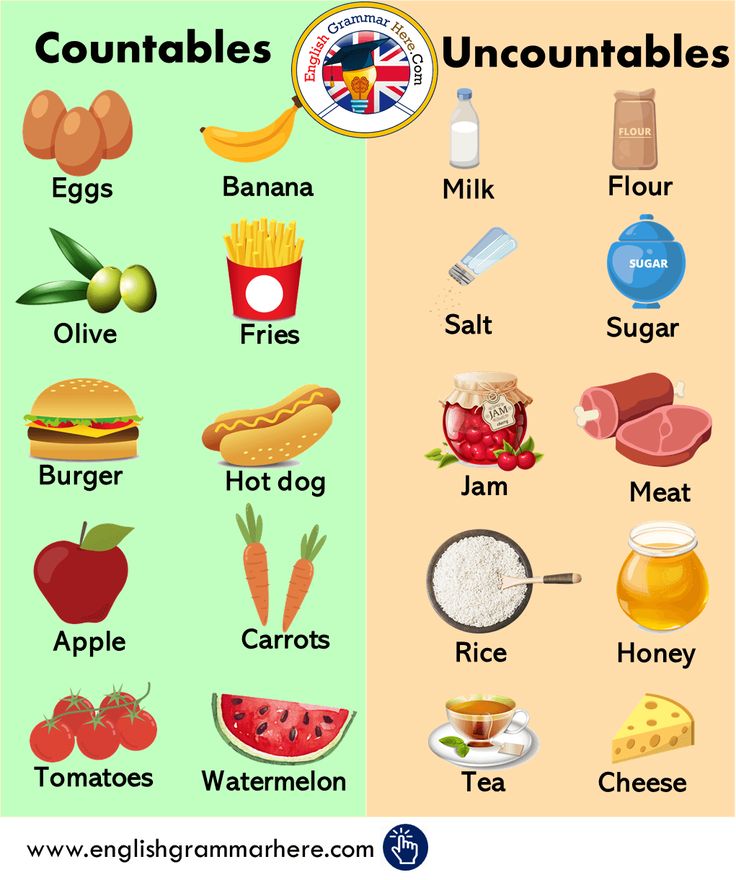 e. 10.90%. Mr. Sidorov, having earned the N amount as a self-employed, deducts all business expenses and is left with a taxable income of $82,000. On this income, he must pay ($61,500 - $3,500) x 10.90% = $6,322.
e. 10.90%. Mr. Sidorov, having earned the N amount as a self-employed, deducts all business expenses and is left with a taxable income of $82,000. On this income, he must pay ($61,500 - $3,500) x 10.90% = $6,322.
As a general rule, all Canadian workers over the age of 18 pay CPP and are eligible for benefits. The exact amount of the benefit depends on how much and for how long you contributed to the fund.
Total CPP contributions and benefits in 2021
| Contributions (in dollars) | per year |
| Maximum rate of return | 61,500.00 |
| Minimum income rate | 3,500.00 |
| Interest paid by the employer | 5.45% |
| Employee percentage | 5. 45% 45% |
| Maximum contribution for a fixed position | 3.161 |
| Maximum contribution when self-employed | 6.322 |
| Maximum Benefits (USD) | Per month (2021) | per year (2021) | |
| CRR pension at age 65 | 1.203.75 | 14,445.00 | |
| Basic Disability Support | for the contributor | 510.85 | 6,130.20 |
| for financially dependent children | 257.58 | 3,090.96 | |
| Widow/Widower Benefit | 65 and over | 650.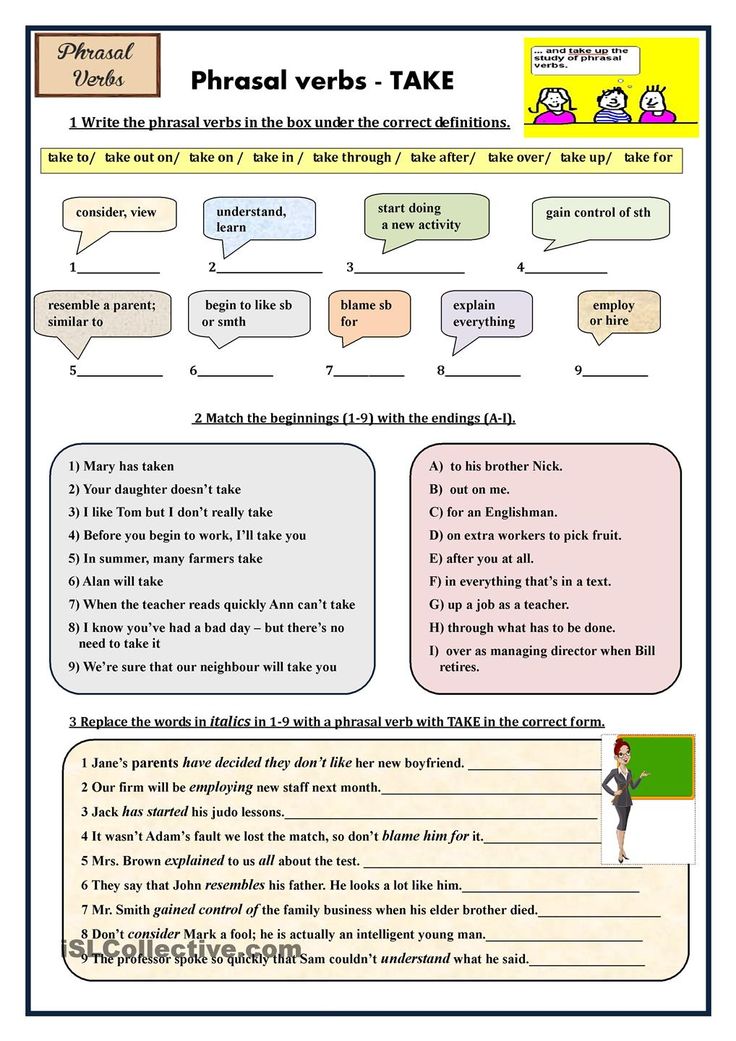 72 72 | 7,708.64 |
| under 65 with a financially dependent child | 650.72 | 7,708.64 | |
| for financially dependent children | 257.58 | 3,090.96 | |
| Death benefit | Up to 2,500.00 (one-time payment) | ||
This table uses data from the government website
http://www.esdc.gc.ca/en/cpp/benefit_amount.page.
In 2021, the maximum CPP pension is $1,203.75 per month if payments begin at age 65.
During your working life there may be years in which earnings are low or non-existent. This should have reduced the CPP benefits due to the low contributions made at that time, however, this does not happen as CPP excludes the lowest 15% earnings from the calculation of the pension.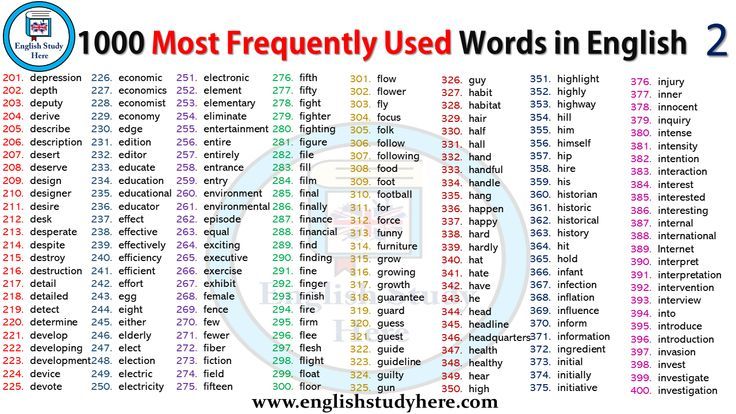 The time you spent on raising children under the age of seven at the expense of work may also not be taken into account in the calculations. Such conditions ensure that the pension is not cut due to several low-paid years.
The time you spent on raising children under the age of seven at the expense of work may also not be taken into account in the calculations. Such conditions ensure that the pension is not cut due to several low-paid years.
Your retirement age matters a lot.
The usual age for receiving a CPP pension is 65 years. However, you can start receiving a pension between the ages of 60 and 70. (Starting in 2012, retirees do not have to quit their jobs to receive their pension.) If you retire early, your pension will decrease by 0.6% every month until you turn 65. For example, if you retire at the age of 60, you will receive 64% of the due amount (100% - (0.6% x 12 months x 5 years)), if you retire later, this will increase your pension by 0.7% for every month worked after the age of 65 - until the age of 70.
Monthly CPP pension is adjusted for inflation every January to bring it in line with rising costs.
Your CPP pension is taxable and must be shown on income tax return (income tax) annually.
Pension used by spouses living together.
You and your spouse can jointly calculate your pensions if you are both at least 60 years old and both have applied for a pension. As a result, this may lead to lower income tax. You must apply for permission to jointly calculate pensions. For example, someone has a pension of $800, while a spouse has only $400. It is possible to make adjustments and recalculate pensions so that everyone has approximately $600. In this case, you may pay less tax. Such a recalculation is done according to a special formula, using the number of years lived together, etc.
You can receive your CPP pension no matter where you live. CPP is not calculated automatically, you should apply for CPP pension at least 6-11 months before you are going to receive it. The application form can be obtained by copying it from the website or by ordering it by phone (see the "Reference Information" section).
Every year, the state provides all depositors in the CPP with personal "Reports of Contributions". If you are 30 or older, you should expect CPP to calculate your pension plan. They also evaluate the benefits that you can receive in the event of disability and your children in the event of your death. Your report is a very important financial planning tool.
If you are 30 or older, you should expect CPP to calculate your pension plan. They also evaluate the benefits that you can receive in the event of disability and your children in the event of your death. Your report is a very important financial planning tool.
The report contains a detailed history of your earnings and contributions to Canada Pension Plan and Quebec Pension Plan (if you work in Quebec).
You must be sure that the report is correct. It is useful to compare your income and contributions declared in income tax with the earnings and contributions recorded in the report.
If you need help understanding the CPP Statement of Contributions, visit the website www.servicecanada.ca or call the CPP. You must notify CPP immediately if you discover an error or do not receive your report.
If you lived and worked outside of Canada?
Canada has agreements with many countries to help you get your Social Security benefits from that country. If you have not lived and worked long enough in a country to claim benefits in that country, the time you spent there may still count towards your eligibility for benefits from that country. To find out if a country has an agreement with Canada, visit the website or call (see Reference section).
If you have not lived and worked long enough in a country to claim benefits in that country, the time you spent there may still count towards your eligibility for benefits from that country. To find out if a country has an agreement with Canada, visit the website or call (see Reference section).
You can read about the third pillar of the pension system in the articles Group RSP (Enterprise Pension Programs) and RRSP (see section Pensions and RRSP).
This information was taken from the Human Resources Development of Canada brochure Canada’s Retirement Income System. What's in it for you.
The Canadian government puts education ahead of many other things. This dedication has helped create a superbly equipped and world-renowned education system in Canada. Many emigrants move to Canada for permanent residence to receive higher education for themselves and their children, realizing how competitive they will become in the international labor market.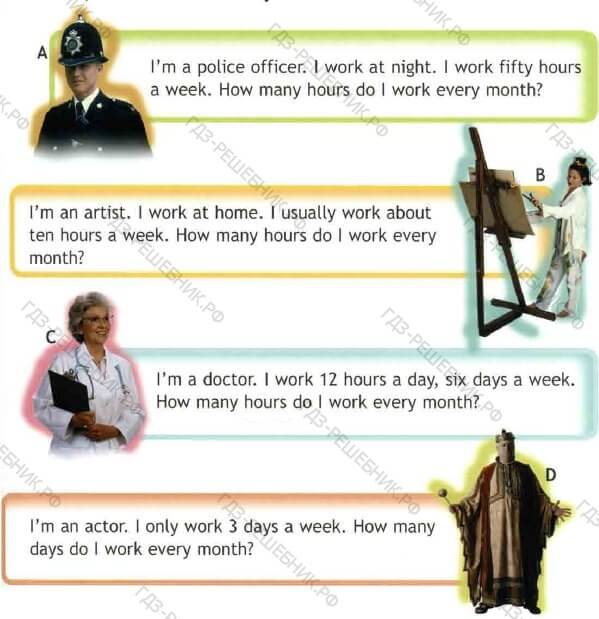
Table of Table of Control
Our experts will help you with business emigration to Canada, opening accounts in foreign banks and international payment systems, registering companies in the Canadian provinces. For advice, write a letter to the e-mail indicated at the end of the article.
The education system in Canada for immigrants is the same as for Canadian citizens. Children must receive school education until the age of 16 without fail. Education is divided into four segments:
Children must receive school education until the age of 16 without fail. Education is divided into four segments:
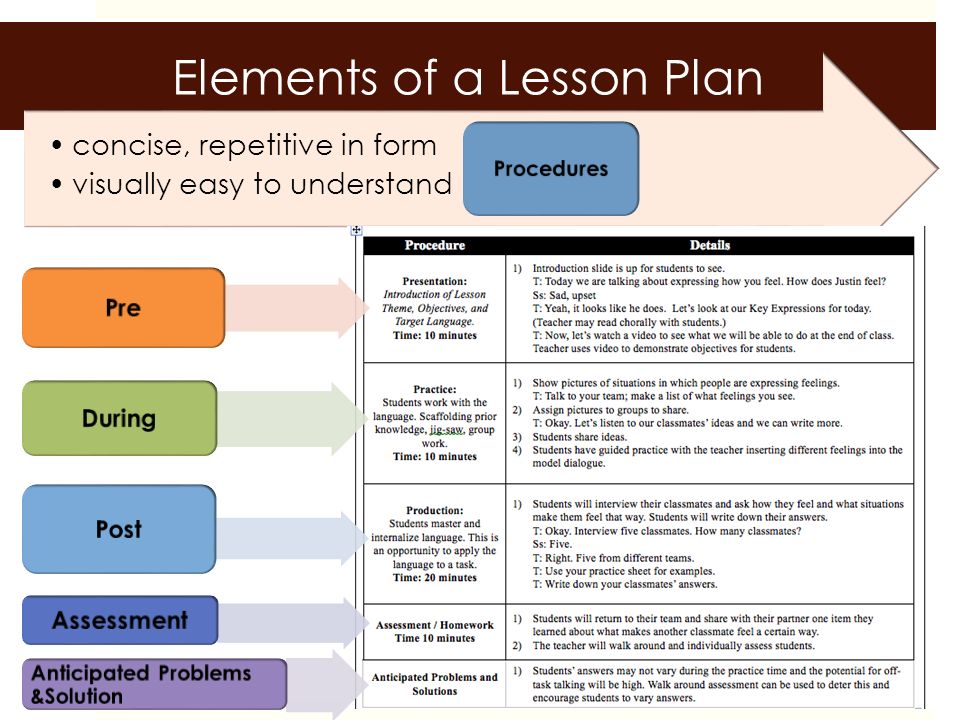 One teacher teaches them in all subjects at the elementary level. Special classes are also available upon request. In the initial stage, there are subjects such as mathematics, reading, science, history, English or French (in provinces such as Quebec), social studies, music, art and physical education.
One teacher teaches them in all subjects at the elementary level. Special classes are also available upon request. In the initial stage, there are subjects such as mathematics, reading, science, history, English or French (in provinces such as Quebec), social studies, music, art and physical education. 
The key month for admissions is September in Canada, when most admissions usually occur. Most universities and colleges offer September and January admission options. Students can also apply for admission to the summer intake, which starts around April or May.
Students can also apply for admission to the summer intake, which starts around April or May.
 50% of the program also covers practice and students must have a work permit.
50% of the program also covers practice and students must have a work permit. There are many other types of Canadian education that you should know a little more about:

Compared to Australia, the UK and New Zealand, Canada is one of the countries with the lowest tuition fees for international students. The annual tuition fee usually averages between 7,000 and 29,000 Canadian dollars. However, prices may vary depending on several factors, such as location, the student's preferred lifestyle, and the degree program chosen by the student.

Studying in Canada is not hard labor and torment. The university is the place where you want to come again and again without missing a single class.
The compulsory education age in Canada varies by province. The youngest age for compulsory education is 5 years old and the maximum age in Manitoba is 7 years old. This is the age when children must already attend school. Students must attend school until the age of 16. However, in some provinces (Manitoba, New Brunswick and Nova Scotia), students must remain in school until they are 18 years old.
The youngest age for compulsory education is 5 years old and the maximum age in Manitoba is 7 years old. This is the age when children must already attend school. Students must attend school until the age of 16. However, in some provinces (Manitoba, New Brunswick and Nova Scotia), students must remain in school until they are 18 years old.
The education system has a standard procedure in most Canadian provinces. However, Quebec is a little different. Students graduate from high schools in Quebec in the 11th grade, as opposed to the 12th grade requirement in most parts of Canada. After that, they continue their studies at CEGEP, another institution of higher education. This is a two-year program that provides students with the opportunity to explore future career opportunities in preparation for their transition to university studies.
English and French are the official languages of Canada. International students can study in either of the two languages, with most schools offering both options.
English is the primary school language throughout Canada, although in provinces such as Quebec, emphasis is placed on learning French. Students here study entirely in French until they graduate from high school. Canadian students in Quebec may study in English only under certain conditions. This rule also applies to students staying in Quebec for a limited time. All immigrants and new citizens must attend French classes. If they want to learn English, they can opt for private tuition instead, although it is more expensive.
Canada has a significant number of migrant students in schools, and more than 1/3 of young people in the country come from immigrant families. Studies have shown that immigrants tend to integrate more quickly into new communities, achieving the same success and progress as their local peers.
Canada provides all students with fair and equal access to learning and education, regardless of all other factors. Canada has retained a system in which students have minor differences. Some students come from wealthy local families, some are from minorities, and some are immigrants. These segments of society are not as disadvantaged in Canada as they are in many other countries. Some people believe that business immigration can potentially affect student success in the country.
Canada has retained a system in which students have minor differences. Some students come from wealthy local families, some are from minorities, and some are immigrants. These segments of society are not as disadvantaged in Canada as they are in many other countries. Some people believe that business immigration can potentially affect student success in the country.
However, most believe that immigrants are the cause of future progress. These students come from families with an innate drive to progress quickly and have high expectations.
At universities in Canada, you can apply for any field of study, from art, languages, history to management and engineering. In recent years, some of the most popular study options for international students are:
Students can choose from a wide range of specializations, including brand management, risk management, and logistics management. Business students can combine academic terms with an internship or work experience in the field.
Business students can combine academic terms with an internship or work experience in the field.
Professors teaching business degrees are experienced professionals and come from all over the world, which creates excellent opportunities for students to network and expand their horizons in terms of approaches to business issues.
Business studies in Canada:
Universities in Canada that offer environmental science programs teach students how to approach and solve environmental problems through ecosystem ecology policy and ethical considerations.
Environmental science curricula are based on experiential learning, so students will see and experience the impact of human activities on the global environment through field research and projects.
Environmental Science Education in Canada:

Whether you choose to study psychology, international relations, political science or anything else in Canada, education programs will adapt to the realities of today's world. Offering an interdisciplinary perspective, social science programs help students acquire valuable skills such as leadership, critical thinking and project management skills that are ideally suited to the needs of the current job market.
Social science universities in Canada:
Since Canada in particular has experienced significant growth in key economic sectors such as infrastructure, construction and transportation in recent years, it is a good option to earn an engineering and technology degree from a top local university. Specializations in this field include systems engineering, electrical and computer engineering, biomedical engineering, and one can take advantage of a wide range of career opportunities in this field after graduation.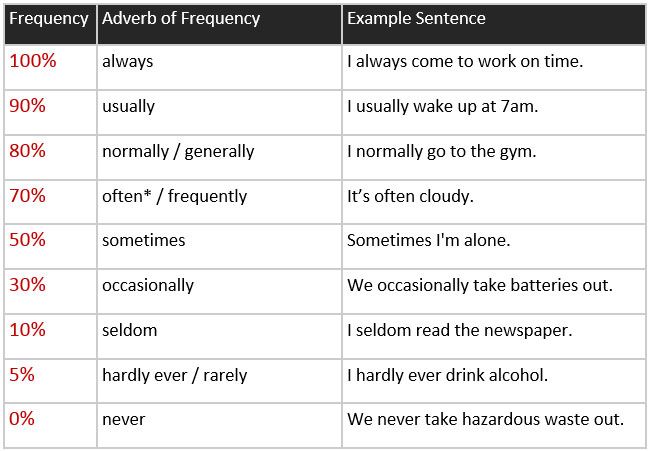
Engineering Universities in Canada:
It is known that the healthcare system and services in Canada are highly valued compared to other countries. Canada is lauded for prevention and primary health care, and because medical schools place a lot of emphasis on research, students planning to pursue a degree in medicine should consider one of the local universities.
Medical Universities in Canada:
Art is an important part of Canada's cultural life and the country has a really interesting history and heritage in this area. Canada's art scene (including painting, sculpture, photography, film and design) is marked by a large and varied wave of immigrants who have come here. As a result, artistic and cultural life met with a mixture of interesting styles that are still present in the major cities of Canada.